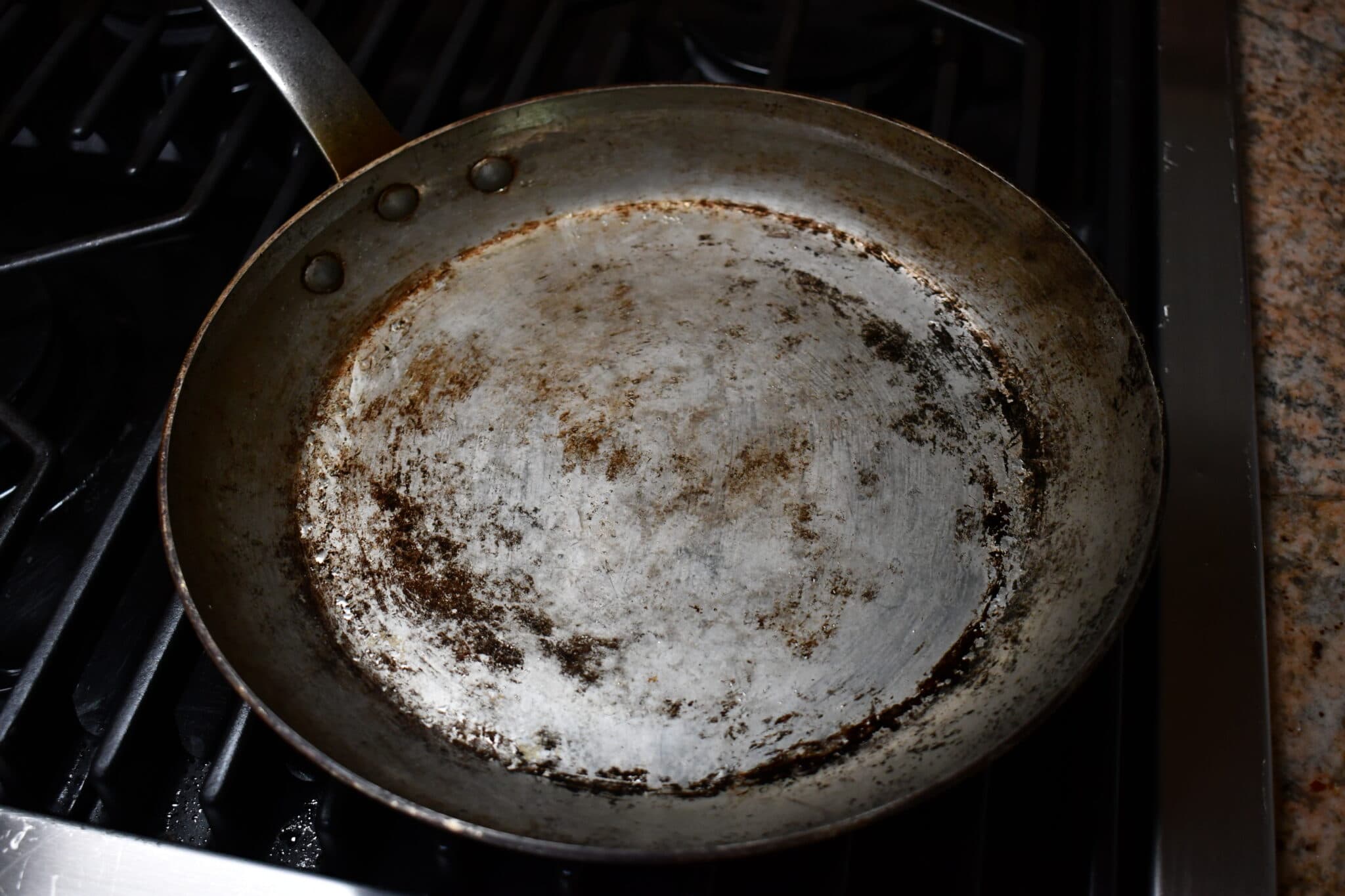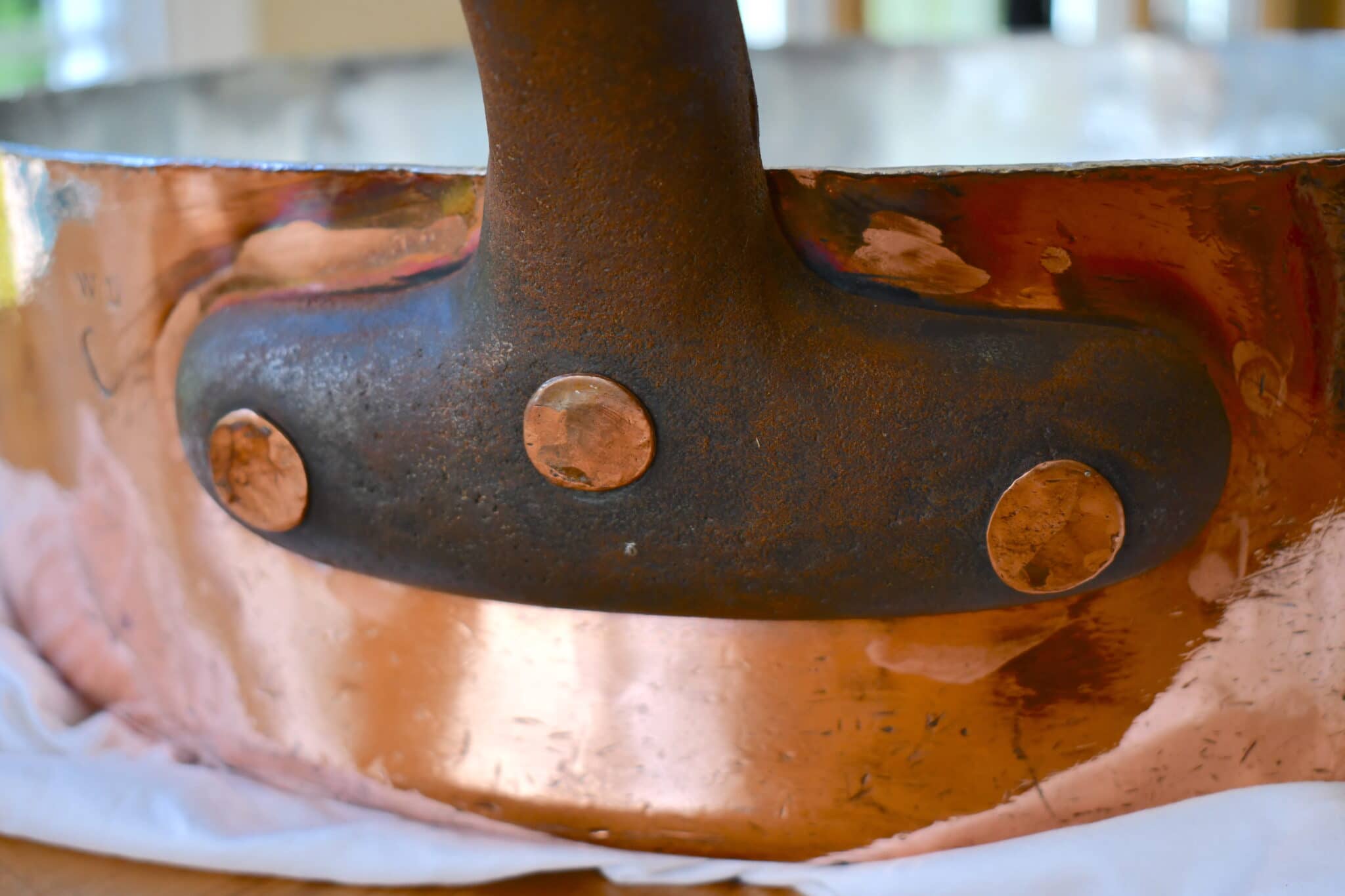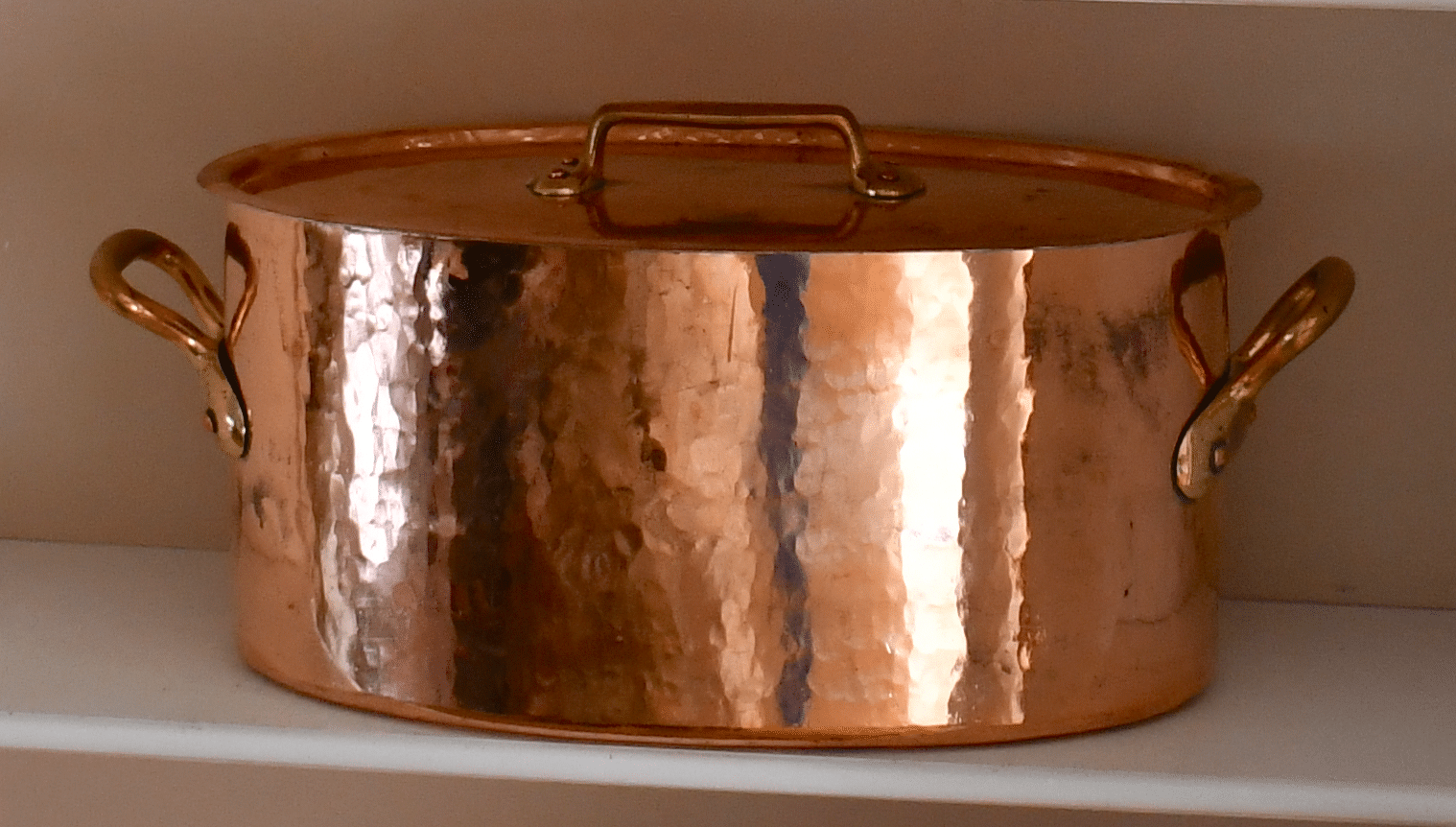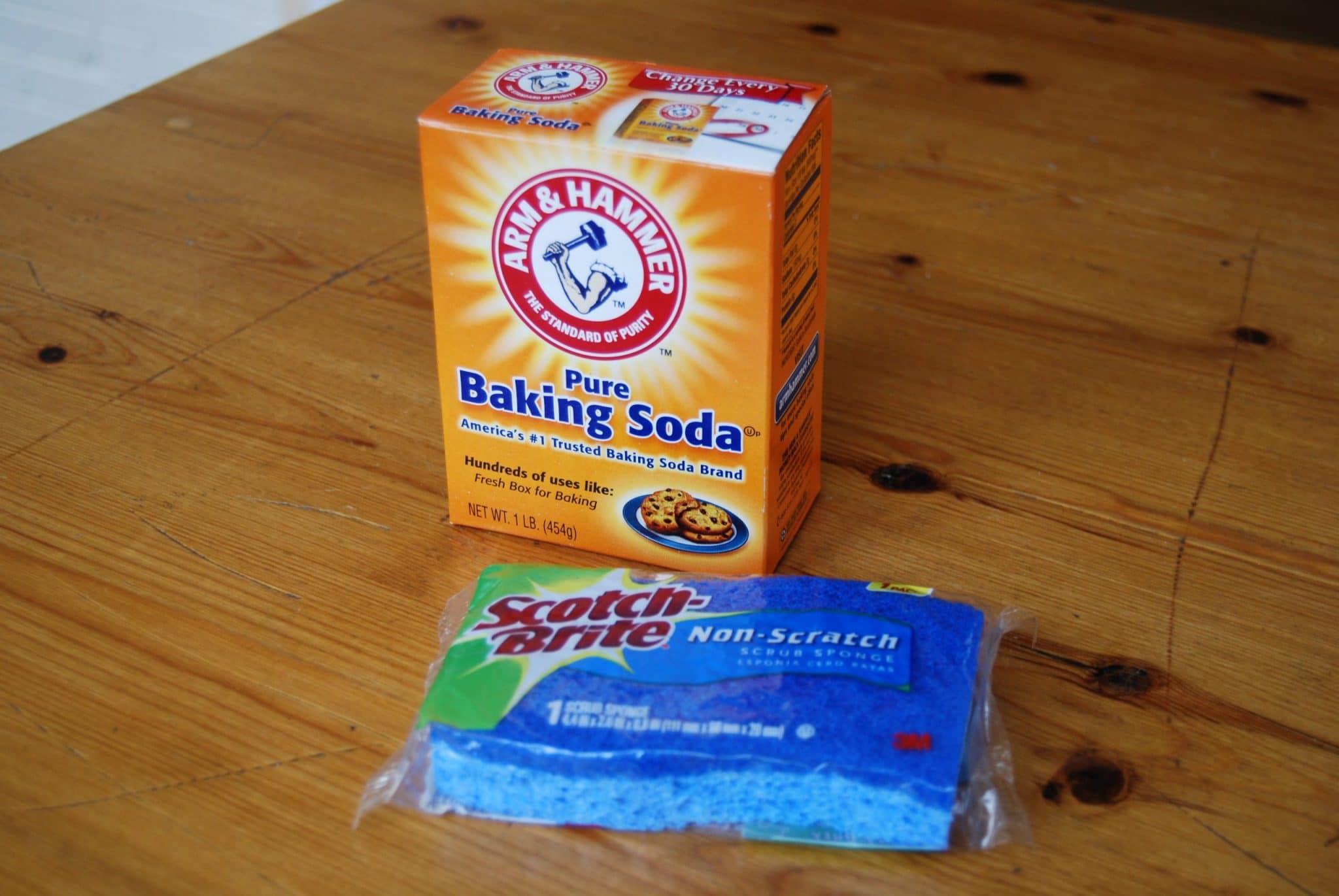Reader Theo had a copper emergency.
Can you help me with this problem. I need to verify that a Mauviel frying pan is a fake… The seller said that they only used it for decoration in the kitchen and never used it for cooking. When I received it we used it carefully over a gentle heat to cook some salmon fillets. When we removed it from the gas we found that the copper had gone glassy. When I washed it it looked really faded.



The next morning I put it over the heat turned down low but for longer to see what would happen. The copper surface went black and flaked off leaving an awful swirling mutl-coloured pattern. What do you think has happened here? Is it real and will it clean up with copper brite, or is it fake and need to be sent back?



Yikes. What Theo is seeing is not normal. Yes, bright fresh copper picks up tarnish when you cook with it — flip your new pan over after you’ve used it for the first time and you will see a tarnish pattern that matches the arrangement of your heat source. But there’s something else going on here. Take a good look at this close-up photo below.

The crisp-looking layer that’s flaking away? That, my friends, is burnt lacquer.
If you’ve never heard of such a thing, know that it’s not a completely crazy idea: a layer of clear lacquer on top of copper will seal it from the atmosphere and thereby prevent tarnish. Some copper makers applied it at the factory to ensure that the copper stayed clean and bright all the way to the retail shelf: Lecellier lacquered their pieces and Baumalu still does to this day. I’m a little surprised to see a Mauviel piece with lacquer on it — I’m not aware that this is or was Mauviel’s practice — but perhaps the prior owner applied it himself. I’ve heard of copper tinners who will lacquer pieces on request.
 But the problem with lacquer is that it will burn when it’s heated, and that is why lacquered pieces usually carry instructions for the first owner to remove the lacquer before use. As the product insert for Lecellier says, “All our products, in order to preserve their beautiful presentation, are covered with an external coat of removable varnish. Before putting it on the heat, immerse your pan in hot water for twenty minutes, and the varnish will lift away like a sheet of cellophane.”
But the problem with lacquer is that it will burn when it’s heated, and that is why lacquered pieces usually carry instructions for the first owner to remove the lacquer before use. As the product insert for Lecellier says, “All our products, in order to preserve their beautiful presentation, are covered with an external coat of removable varnish. Before putting it on the heat, immerse your pan in hot water for twenty minutes, and the varnish will lift away like a sheet of cellophane.”
Unfortunately Theo didn’t get this advice. It looks like the lacquer on his pan held its ground for his first outing with the salmon, but it carbonized with more exposure to heat. It looks terrible — I don’t blame Theo a bit for wondering if the pan was a fake that was falling apart.
I told Theo that the good news was that I didn’t think the copper had been harmed. But the bad news is that burnt lacquer can be difficult to remove, particularly if it has been heated to the point where it polymerizes. My advice to Theo was to start with some copper cleaner (such as Bistro or Wright’s). If the copper cleaner didn’t remove the dark residue, the next step would be to try acetone and fine-grained steel wool. (I went through this with a pommes Anna pan with a spot of polymerized adhesive — the residue of a price sticker.)
But this story has a happy ending: the copper responded immediately to copper cleaner. The lacquer was removed before it could harden and the copper is good as new.


This is a good reminder: as much care as we take of it, as careful as we are with tin and scratching and all that, copper is actually pretty tough. Many a gross-looking old pan has emerged bright and fresh from a good cleaning; many a dented, out-of-round piece has come home from the tinner straight and true. Copper forgives us, and I am grateful for that grace.
And best of all, this pan is not a low-quality fake as Theo feared, but genuine Mauviel. I hope it gives Theo many years of wonderful cooking.






All’s well that ends well, still the fine’s the crown;
Whate’er the course, the end is the renown.
(Helen, Act 4 Scene 4)
Poor Theo – burnt lacquer can be a real fright! If the previous owner used the pan for decoration, then he most likely applied the coating himself. I can confirm that it’s very easy to produce a “fresh-from-the-factory” look using a product called ProtectaClear, which is a thin, self-leveling coating that will keep copper tarnish and fingerprint free for years. When cured, the coating is food-safe (although, not heat safe!) and invisible. I wait until the copper mellows a bit after cleaning and polishing (turns from fresh pink to my favorite warm copper color), then I wipe the copper with an acid neutralizer followed by an application of ProtectaClear with a sponge brush. Amazon sells a 4oz kit and I’ll send the link to VFC if you’re interested. A clean paper towel soaked in Xylene or a Xylene substitute (I use Klean-Strip Painter’s Solvent) is the recommended way to remove the coating. Elbow grease and heat works, too. 🙂
Thank you Val! For readers who are interested in this, here is a link to the product that Val mentions:
ProtectaClear Trial Kit (4 Oz) by Cascadia Intl. Distribution
https://www.amazon.com/dp/B01MR9FH70/ref=cm_sw_em_r_mt_dp_tZo0FbQ5RMAET
(That’s a link to Amazon so you know which product it is, but as always, I have no referral relationship or anything like that so please always find the best deal for yourself!)
I think this might be a good idea for those copper pans that will never see a burner or oven while you own them. Especially useful in the case of those extra large restaurant sized pieces that are very heavy and might accidently be dropped in the course of repeated cleaning and polishing. In my own collection I can think of two pieces, a 46 cm rondeau and a 50 cm rondeau that I do not anticipate ever using with my modest glass-top stove and so might benefit from this treatment. If using the solvent xylene please keep in mind this is a toxic and volatile flammable liquid so use in a well ventilated area.
Thanks Stephen! One additional caveat I’d like to suggest is that if you do varnish a piece and subsequently sell it, please let the buyer know so that he or she knows to remove it prior to cooking!
This not uncommon practice of coating copper with varnish has its merits, as long as you know the varnish has been applied, especially if the copper is only intended for display, which is common in France.
I have read that boiling the varnish treated cookware in water with baking soda added will remove the varnish very easily. I know someone who did this with a Havard rondeau and it worked well.
I hope this helps.
I agree with Greg. In Germany, Zapon varnish is common, a water-white nitrocellulose lacquer that is thinly sprayed on and dries very quickly. It forms an invisible protective film that prevents matting, discoloration and corrosion (patina) on shiny metal surfaces. It can be easily removed with baking soda dissolved in warm water or with the stronger washing soda. I’ve done this several times already. The lacquer separates from the copper like a foil.
Thanks for the description of this coating and how to remove. 40 years ago for a wedding gift, we were given a gorgeous copper kettle that was coated this way. The brand new pan came with a manufacturer card that described how to remove the coating before cooking. I lost the card, never cooked with the pot because I could not recall exactly what the coating was and how to remove. This explains my 40 year dilemma and I am so grateful! Now I can use my gorgeous heirloom! Thank you!